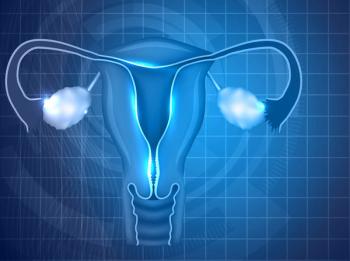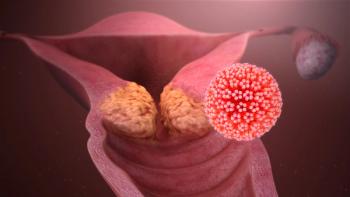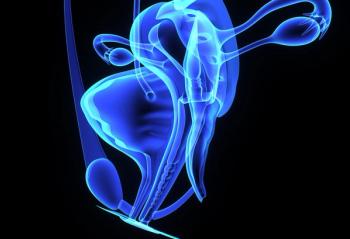
Oncology NEWS International
- Oncology NEWS International Vol 17 No 3
- Volume 17
- Issue 3
Initial results: Amifostine fails to reduce acute toxicity in cervical ca pts on CT-RT
The cytoprotective agent amifostine (Ethyol) did not reduce the rate of acute severe toxicity among patients undergoing combined radiation therapy and chemotherapy for locally advanced cervical cancer, according to a phase I/II study reported at ASTRO 2007 (abstract 10). The trial, RTOG 0116, enrolled women with cervical cancer who had evidence of positive para-aortic or high common iliac nodes.
LOS ANGELES-The cytoprotective agent amifostine (Ethyol) did not reduce the rate of acute severe toxicity among patients undergoing combined radiation therapy and chemotherapy for locally advanced cervical cancer, according to a phase I/II study reported at ASTRO 2007 (abstract 10). The trial, RTOG 0116, enrolled women with cervical cancer who had evidence of positive para-aortic or high common iliac nodes.
“There is a suggestion in the literature that the addition of chemotherapy to radiation improves control rates in these patients, although with significantly increased toxicity,” said lead author William Small, Jr., MD, of the Robert H. Lurie Comprehensive Cancer Center of Northwestern University, Chicago.
In arm 1, patients received extended-field radiation therapy along with weekly cisplatin and high- or low-dose-rate brachytherapy; optionally, treatment could also include a boost to the nonpelvic lymph nodes. In arm 2, patients received the same regimen with the addition of amifostine given 30 to 60 minutes before each radiation treatment (500 mg in two subcutaneous injections).
Results presented at the meeting focused on the 15 evaluable patients in the amifostine arm (median follow-up, 11.4 months). Only 3 of these patients received amifostine according to the study protocol, Dr. Small noted. The median total dose of amifostine received was 5,000 mg out of the planned 13,500 mg.
A comparison of arm 2 with arm 1 (26 patients with a median follow-up of 17.1 months) in terms of acute grade 3-4 toxicity, excluding grade 3 leukopenia-the primary objective of the analysis-showed that rates did not differ significantly between arms (87% for amifostine vs 77% for arm 1), Dr. Small said (see Table).
Analyses of the rate of toxicity according to the amount of amifostine received did not show any correlation, but the number of patients was small, he noted.
Did nausea skew the data?
The leading grade 3 nonhematologic toxicity in arm 2 was nausea, occurring in five patients. “Grade 3 nausea is defined as inability to take significant oral intake or receive IV fluids, and those of us who treat advanced cervix cancer survivors give IV fluids a lot, so I am wondering if that skewed some of these data,” he said.
The other common grade 3 nonhematologic toxicities were vomiting and metabolic/laboratory abnormalities. The only grade 4 acute nonhematologic toxicities were metabolic/laboratory abnormalities. There were no grade 3 or 4 lower gastrointestinal toxicities.
In arm 2, the worst late radiation therapy toxicity overall was grade 1 in 8% of patients, grade 2 in 25%, and grade 3 in 8%. In arm 1, the worst late radiation therapy toxicity overall was grade 3 in 20% of patients and grade 4 in 20%.
Dr. Small concluded that the addition of amifostine did not reduce overall acute toxicity. Secondary endpoints, he said, including rates of late toxicities, will be analyzed after longer follow-up.
Commentary
Akila N. Viswanathan, MD, MPH, of Brigham and Women’s Hospital, commented that the trial was the first to assess amifostine in this patient population.
“Amifostine did not decrease the risk of toxicity, though the dose administered was significantly lower than that originally intended for many patients. Long-term toxicity was lower with amifostine, and that will need further follow-up,” Dr. Viswanathan told ONI. “Future research seeking out other ways to decrease toxicity is necessary.”
Articles in this issue
almost 18 years ago
Recentin headed to phase III in first-line colon caalmost 18 years ago
Topo 2 alpha test FDA approvedalmost 18 years ago
RFA provides sustained pain relief in osteoid osteomaalmost 18 years ago
Renal ca surgery often determined by doctors’ practice stylealmost 18 years ago
Partial nephrectomy underutilized for small renal tumorsalmost 18 years ago
Most older men with early-stage cancer can avoid treatmentalmost 18 years ago
SERM reduces ADT side effectsalmost 18 years ago
New serum biomarker appears to detect colon canceralmost 18 years ago
Hypofractionated IMRT does not increase sexual side effectsalmost 18 years ago
Surface mapping aligns patients for external beam PBINewsletter
Stay up to date on recent advances in the multidisciplinary approach to cancer.

















































































